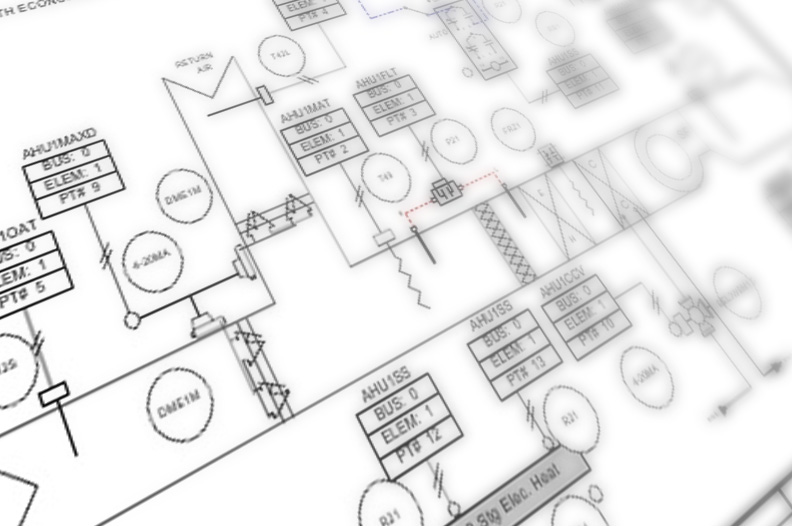
BAS Estimating with MS Visio
by Hector HernandezLet’s face it, it can be more than a little challenging to get other people excited about retrofits, HVAC control systems, and mechanical subsystems. But what if you could visualize your work in such a powerful way that clients looked forward to poring over your estimations?
For building automation control firms that want to remain competitive, the ability to efficiently create and manage technical drawings is critical. Microsoft’s Visio allows design engineers to spend less time generating drawings and more time working with clients to ensure their systems meet their operational needs as well as the comfort and safety of building occupants.
Diagramming Made Simple
A good BAS estimate is one that identifies all the various elements in a project. But since every project is different, various situations can affect the requirements and risks involved. Each of these elements must be taken into account.
- The type of building. Is it an office tower, medical facility, school, retail structure, or other commercial structure?
- Construction methods. What materials were used? Do they include concrete, drywall, wood or steel framing, etc.?
- Building height. How many floors are there, are there elevators? What are the wait times?
- Work involved. Will there be new or retrofit work done? What will be demolished? Will the building be occupied while work is in progress?
- Complication factor. Is the building a high-security one? Are there restrictions on where equipment can and cannot be placed?
All estimates should strive to reflect the realities of installation challenges, design problems, and the building structure itself. Visio is a diagramming and vector graphics app that lets you easily create multiple diagrams using a rich set of shapes, stencils, and templates, including ones for HVAC and other building systems.
Benefits of Using Visio to Create Building Plans
As we all know, diagrams and flowcharts make the complex more understandable. With Visio, you can create flowcharts, process diagrams, organizational charts, as well as floor plans and maps. It comes with a complete set of object stencils, including structural walls, doors, and HVAC elements. You can also export your diagrams to a range of image formats, including vector files.
And while you can currently export Visio files to third-party 3D apps, Microsoft announced late last year that Visio Immersive is on the way which will make it easier to create, view, modify, and share 3D diagrams using mixed reality devices.
Visio has been around a long time—over a quarter century—which means Microsoft has had plenty of time to fine-tune and improve the application. It uses the familiar Microsoft Office interface so you can dive right into creating instead of learning a new program from scratch. Creating floor and building plans are fast and intuitive, this helps streamline the estimating process. The software also automatically sorts flowcharts making it easy to add elements as the estimating process moves forward.
Visio and BAS Estimating
Nowhere is it truer than in engineering that a picture is worth a thousand words. Visio makes equipment layout a whole lot easier to understand by converting complex text and tables to diagrams that communicate information to the engineering team at a glance.
Precise cost estimating is difficult enough, with accuracy changing throughout the project lifecycle. MS Visio is an intuitive and flexible tool for creating building automation scopes and estimates while helping you streamline the entire process. It can relieve a lot of the stress that comes with estimating and give you the competitive edge you’re looking for.
